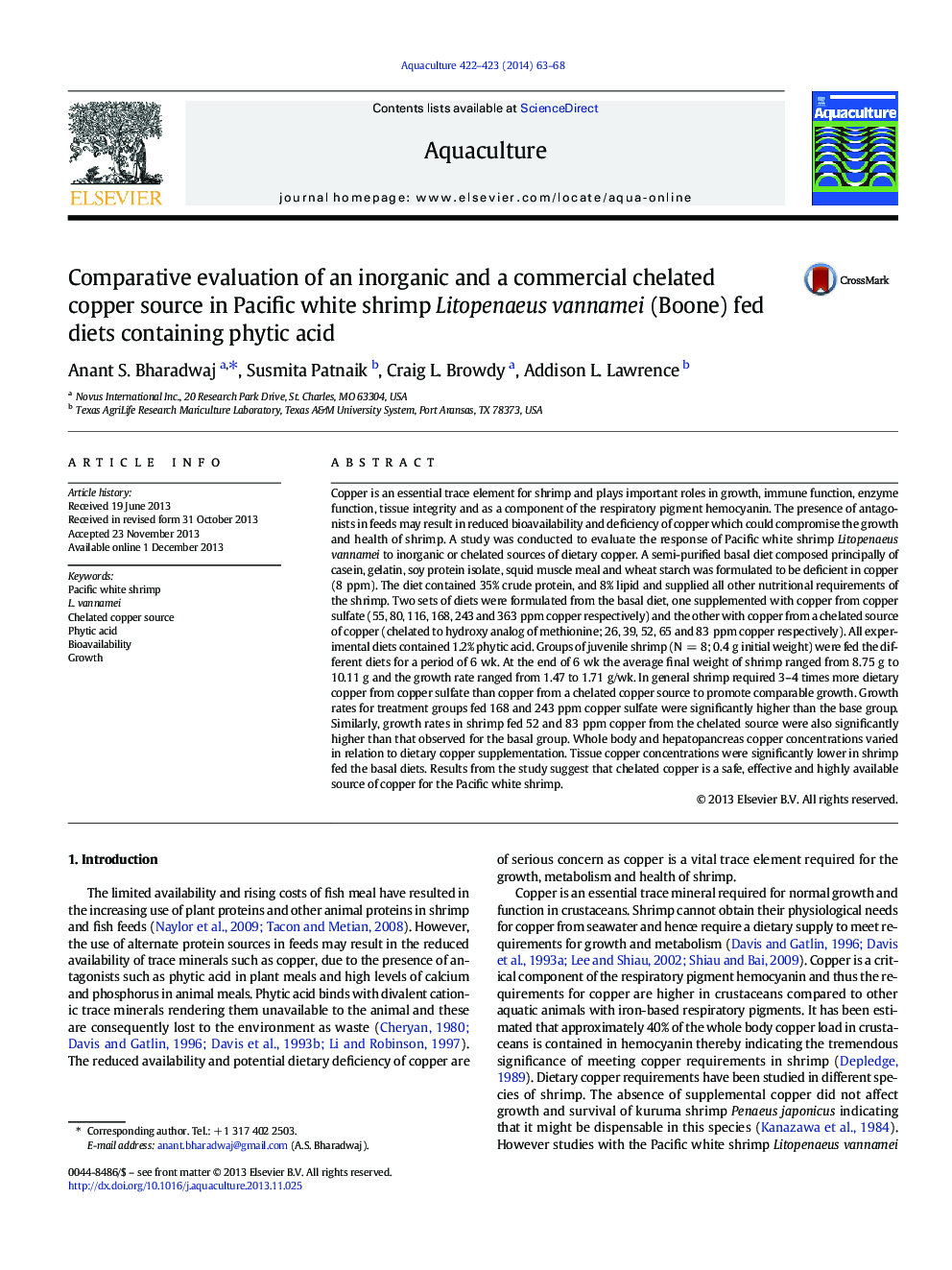| Article ID | Journal | Published Year | Pages | File Type |
|---|---|---|---|---|
| 2421939 | Aquaculture | 2014 | 6 Pages |
•Higher availability of copper from an organic chelated copper source•Improved availability lowers amount that needs to be supplemented to shrimp diets•Higher availability reduces feed costs and reduces copper emissions into the environment
Copper is an essential trace element for shrimp and plays important roles in growth, immune function, enzyme function, tissue integrity and as a component of the respiratory pigment hemocyanin. The presence of antagonists in feeds may result in reduced bioavailability and deficiency of copper which could compromise the growth and health of shrimp. A study was conducted to evaluate the response of Pacific white shrimp Litopenaeus vannamei to inorganic or chelated sources of dietary copper. A semi-purified basal diet composed principally of casein, gelatin, soy protein isolate, squid muscle meal and wheat starch was formulated to be deficient in copper (8 ppm). The diet contained 35% crude protein, and 8% lipid and supplied all other nutritional requirements of the shrimp. Two sets of diets were formulated from the basal diet, one supplemented with copper from copper sulfate (55, 80, 116, 168, 243 and 363 ppm copper respectively) and the other with copper from a chelated source of copper (chelated to hydroxy analog of methionine; 26, 39, 52, 65 and 83 ppm copper respectively). All experimental diets contained 1.2% phytic acid. Groups of juvenile shrimp (N = 8; 0.4 g initial weight) were fed the different diets for a period of 6 wk. At the end of 6 wk the average final weight of shrimp ranged from 8.75 g to 10.11 g and the growth rate ranged from 1.47 to 1.71 g/wk. In general shrimp required 3–4 times more dietary copper from copper sulfate than copper from a chelated copper source to promote comparable growth. Growth rates for treatment groups fed 168 and 243 ppm copper sulfate were significantly higher than the base group. Similarly, growth rates in shrimp fed 52 and 83 ppm copper from the chelated source were also significantly higher than that observed for the basal group. Whole body and hepatopancreas copper concentrations varied in relation to dietary copper supplementation. Tissue copper concentrations were significantly lower in shrimp fed the basal diets. Results from the study suggest that chelated copper is a safe, effective and highly available source of copper for the Pacific white shrimp.
